The report itself looks very suspicious, this should not happen with a reputable organization like the UN!
UN Human Rights Office issues assessment of human rights concerns in #China’s #Xinjiang #Uyghur Autonomous Region. Read more: https://t.co/F2wpHFpIoy pic.twitter.com/f83bmfY7bZ
— UN Human Rights (@UNHumanRights) August 31, 2022
1. Who wrote this report?
Assuming that the report was published at the same time as the QT above, the report was published on September 1 at 00:20 Geneva time and on August 31, 2022 at 18:20 US EST. This means that Bachelet’s term had technically expired. The OHCHR is located in Geneva….
… so the report was technically published on September 1, instead of the stamped date, August 31.
Also, unlike other OHCHR reports, the beginning of the report does not refer to the High Commissioner, the Secretary General, or Bachelet as usual. Compare the screenshots below.
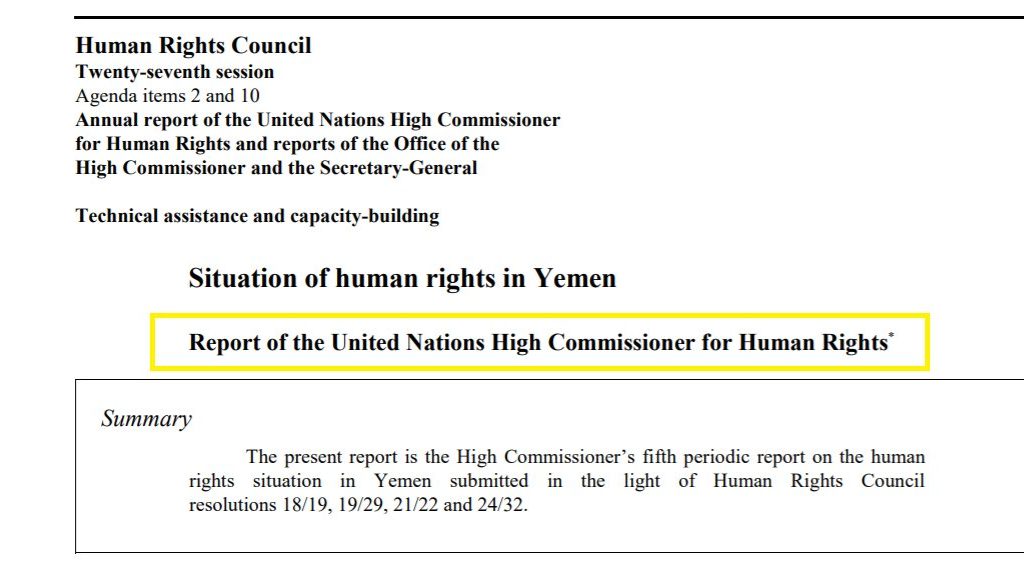
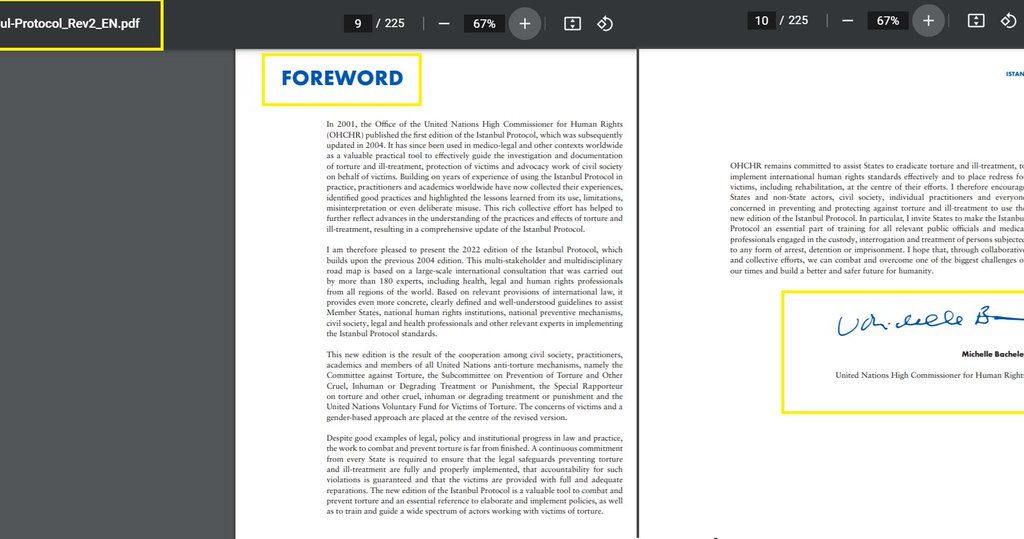
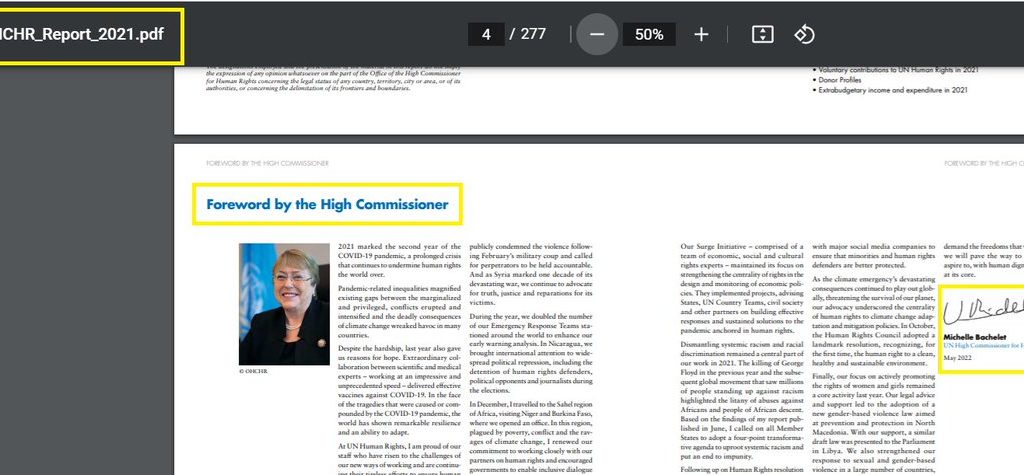
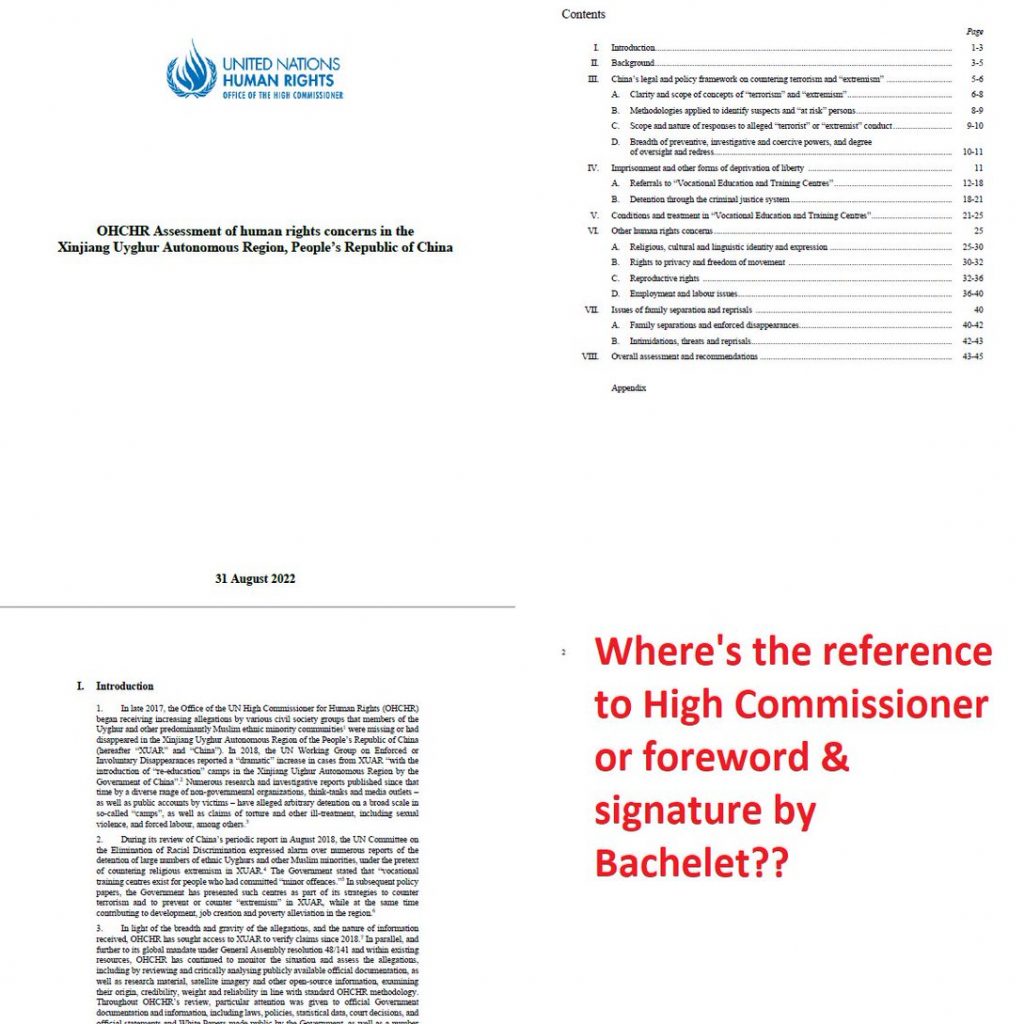
So, who wrote the report? Could it be a party? That would explain why the quality of the report is so poor.
Bachelet is silent and the Chinese response was not directed at Bachelet, so it seems reasonable to assume that the author was not Bachelet herself. And that she was not involved in any plans.
China didn’t mention Bachelet at all. She is not involved. The report isn’t from her. pic.twitter.com/R2vO1TG9ym
— ❌️²² (@MotulX22) September 3, 2022
2.There is no reference to Bachelet’s May visit to Xinjiang. However, there are several references to Xinjiang police files that were released at the same time as Bachelet’s visit.
This again raises the question of who wrote the report and if there was an agenda?




3. Some concerns expressed in the report have already been raised, especially forced birth control due to family planning laws. The concern was for the reproductive rights of ALL women in China. So what is the justification for using this concern now to imply ethnic discrimination?
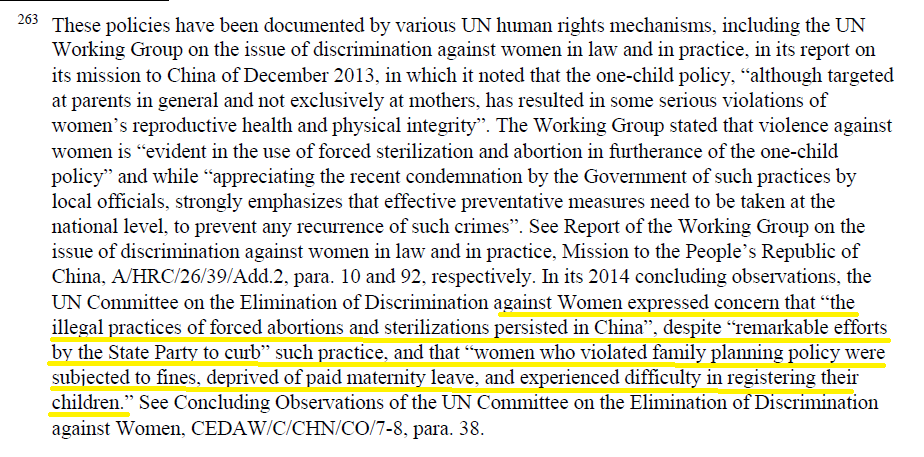

4. Why are accusers and opinions of some analysts given more weight than responses from the Chinese government, assessments from Muslim majority countries and opinions of other analysts?
The recommendations assume the accusations are all true, and ignores contrary assessments.
For example, in footnote 137, you can clearly see the Chinese government disputing evidence as presented by ASPI, but ASPI is still given the last word via Nathan Ruser’s twitter account (!).
Why are the myriad of twitter rebuttals against ASPI and Ruser not also included?

Another example, the XJ Victims Database is also referenced repeatedly as a reliable source. However, there’s a “victim” in that database that was sent there by her mother. Why did the UN not speak to her mother to find out the reasons behind her action?
🤣🤣🤣 https://t.co/xhiOCwUWVQ pic.twitter.com/gIkUluXI4l
— GreyFox (@GFPhilosophy) August 21, 2022
People like Shawn Zhang, Adrian Zenz, and organizations like ASPI, Victims of Communism Memorial Foundation are uncritically cited in the report. However, they have been proven to be unreliable sources of information. Why was the UN not concerned about using these sources?
![]()
![]()

Why were the visits of diplomats from Muslim majority countries, and their assessments of the situation, not referenced at all in the report? If organizations like ASPI and Victims of Communism are considered reliable and relevant, then diplomats surely are worth quoting too?
5. Why is the evidence so bad?
Why are there so many unofficial translations? Can the UN not get the documents translated properly, even though they are believed to be genuine?
Why does the report refer to a BBC article on labour transfer programs, which is entirely based…

…on a CCTV report, rather than refer directly to the CCTV report itself? The BBC report presents an incomplete story that demonizes the process, whereas CCTV presented a more complete picture of the process, and has follow ups.


Why does Paragraph 42 say “Not a single interviewee said they were able to exit the facility or go home for a visit”, when even the BBC has filmed students from one VETC going home on the weekend? Does this not indicate a biased sample of interviewees?

Why does Paragraph 125 say there’s an “inability of placed workers to freely change employers”, when an example Amnesty International gave shows a person being released because he said the work didn’t suit his experience? How biased is the UN sample?

Aside from the CAH claims, Amnesty also makes forced labour claims. However, some of the stories provided are less than incriminating. We must remember that these are amongst the worst accounts Amnesty gathered, so the typical experience would sound even less concerning. pic.twitter.com/ocABNuNvG8
— GreyFox (@GFPhilosophy) June 15, 2021
Why does Paragraph 86 cite removal of minarets from mosques as a negative and indicates some sort of cultural or religious erasure, when ASPI’s report says these are likely to be recent additions and there are plenty of famous mosques without minarets?


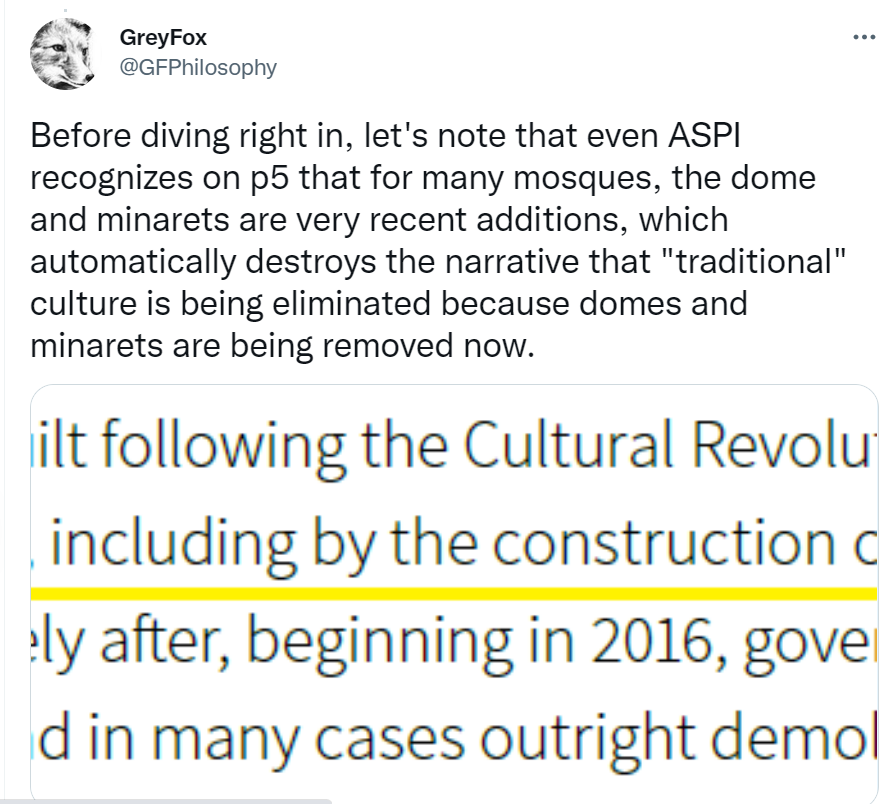
Over the past few years, much was made of what may be happening to China’s mosques, and the question of what makes a mosque a mosque. Do all mosques have a domed roof? or minarets (towers)?
A repost of a 🧵 of famous or notable mosques outside China that lack this architecture:
— Kyle 🚄 (@KyleTrainEmoji) September 1, 2022
In Paragraph 135, an individual lost contact with more than 30 relatives, as all had either changed their phone numbers or simply refused to accept his phone calls. Has the UN asked the family to confirm this is not because this person is someone that everyone wants to avoid?
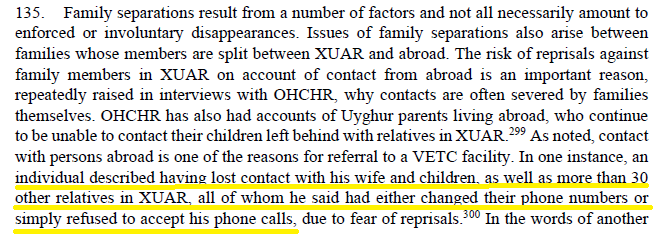
There are also multiple instances where the report itself says that it cannot verify the information in the report that was presented as credible. Is it not worrying that many of the key conclusions are based on unverified information? If the OHCHR can’t verify it, then who can?

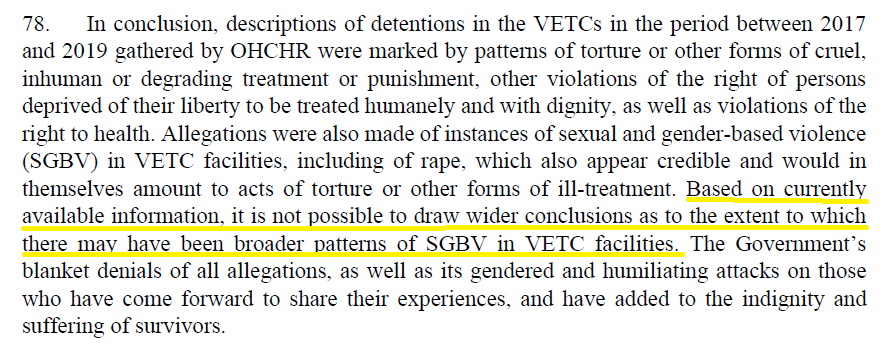

Finally, we would like to point out that the original allegation was genocide, and the UN report has arrived at “serious human rights violations … related to the government’s use of counterterrorism …”.
This is a serious downgrading of the allegations, and it recognizes …
… China is not aiming to annihilate the Uighurs.
France’s anti-terror campaign includes banning Muslim head coverings, which is also a human rights violation. And let’s not forget what the U.S. has done in the name of the war on terror. So why is there so much focus on China?
To all the countries that have declared what is happening genocide, and the Uighur tribunal that has ruled that there is genocide, what do you say now?
Also, it is interesting that all the headlines in the media stop at “grave human rights violations” without giving the context.
Summary from: GreyFox
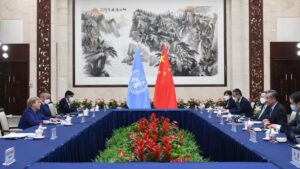
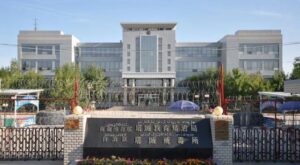
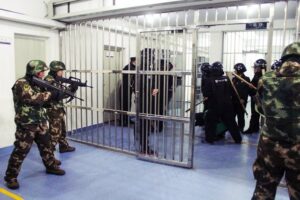
The background of the individuals the OHCHR interviewed is unclear. Most of the report’s claims on torture and forced labor came from the testimony of 40 people, 2/3 of whom had had interviews with unnamed organizations and journalists (see footnote 12 of the report).
Some sources the report cited are not independent. For example, the Australian Strategic Policy Institute (ASPI), cited on page 17, is funded mainly by Australian and the U.S. government.
The authenticity and interpretation of some documents the OHCHR referred to are in question. The Office used allegedly “leaked” documents from “China Cables,” the “Xinjiang Papers,” the “Karakax List,” the “Urumqi Police database,” and the “Xinjiang Police Files” (footnote 8) as evidence. Without confirming the authenticity of these documents, the Office justified its reference by claiming they are “highly likely to be authentic based on strong indicia of official character” on page 2.
Source: https://www.cusef.org.hk/en/cusef-blog/cusef-express/cusef-express-sep-02-2022